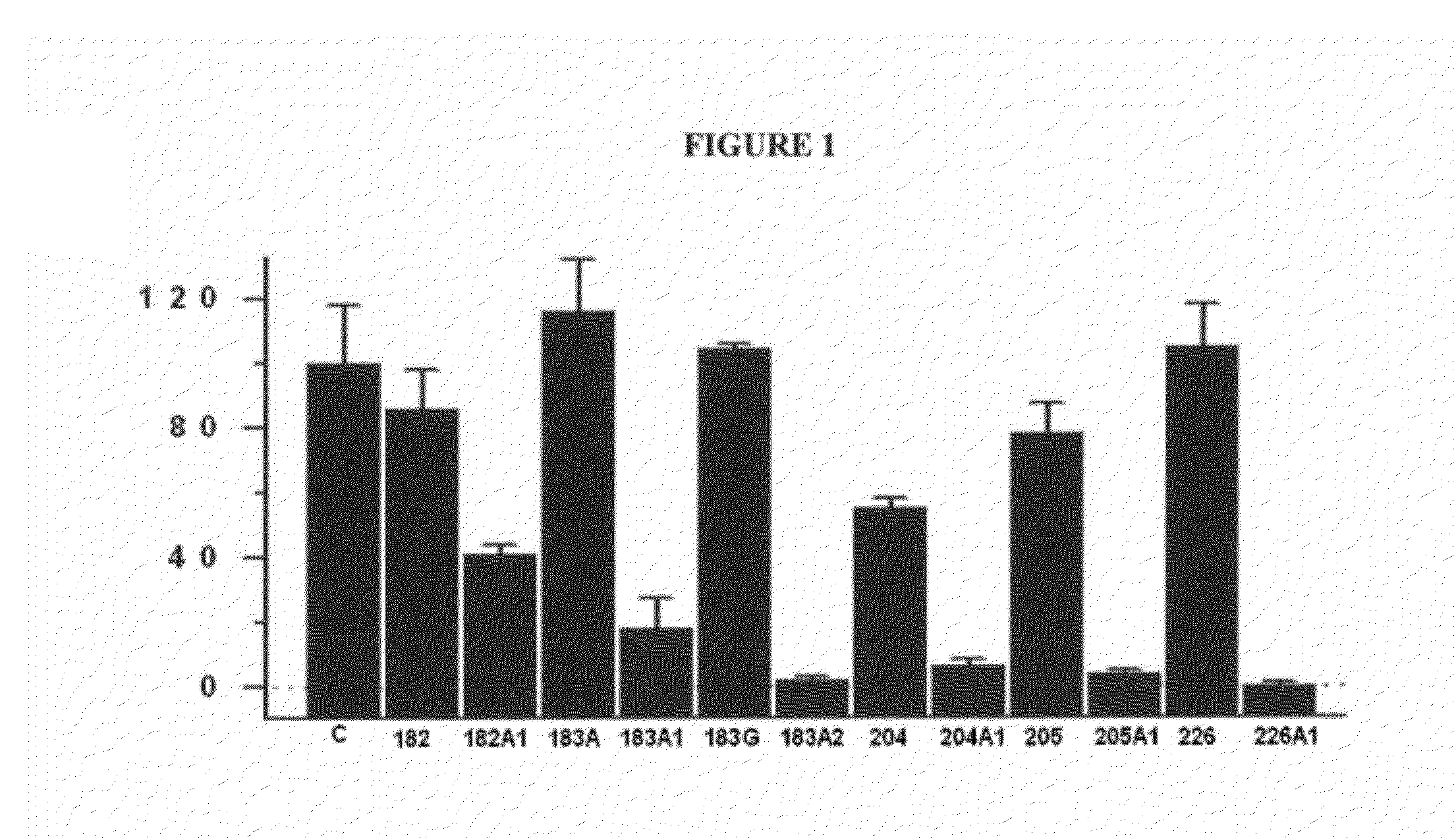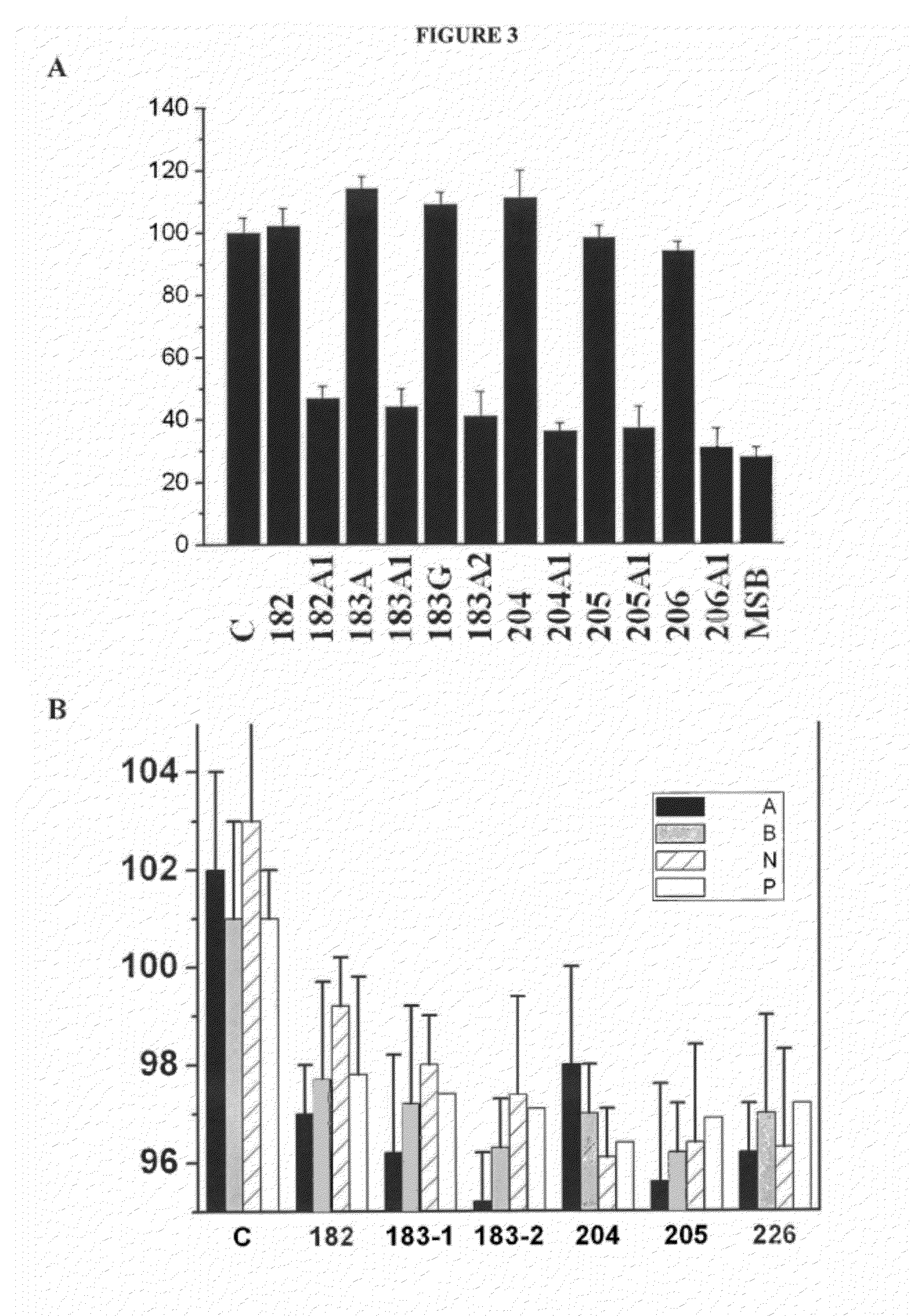Use of Derivatives of Polyunsaturated Fatty Acids as Medicaments
a polyunsaturated fatty acid and derivative technology, applied in the field of use of 1, 2polyunsaturated fatty acid derivatives as medicaments, can solve problems such as differences in the packaging of the surface of the membran
- Summary
- Abstract
- Description
- Claims
- Application Information
AI Technical Summary
Benefits of technology
Problems solved by technology
Method used
Image
Examples
example 1
Percentage of Total PUFAs in Membranes of Cells Treated with D-PUFAs and PUFAs
[0056]Synthetic D-PUFA molecules are hydrophobic, and therefore cells exposed to these D-PUFAs have high levels of these fatty acids on their surfaces.
[0057]Table 4 shows the total percentage of PUFAs in membranes of 3T3 cells treated with 100 μM of these fatty acids for 48 hours. To perform these experiments, membranes were extracted and total fatty acids were obtained by hydrolysis in basic medium. Methanolic bases of these fatty acids were quantified by gas chromatography. The data shown are averages of four independent measures of PUFA's mass divided by the total fatty acids and expressed as a percentage. It is also shown is standard error of the mean. In cell cultures, 3T3 cells incubated in the presence of these fatty acids showed higher levels of PUFAs (including D-PUFAs) and lower levels of saturated fatty acids.
[0058]The control corresponds to a culture without the presence of added natural or syn...
example 2
L (Lamellar)-to-HII (Hexagonal) Transition in DEPE (dielaidoil phosphatidylethanolamine) Cell Membranes
[0059]Tables 5 and 6 show the lamellar-to-hexagonal (HII) transition temperature in DEPE model membranes. The transition temperature was determined by Differential Scanning Calorimetry. The proportion DEPE:D-PUFA was 10:1 (mol:mol) in all cases. Lamellar-to-hexagonal transition is an important parameter that reflects relevant signalling properties of cell membranes. The propensity to form HII phases, which is higher as the temperature of this transition lowers indicates that the membrane surface pressure is lower, meaning that the polar heads of phospholipids form a less dense or compact network that those formed by lamellar structures (Escribá et al., 2008). When this occurs, certain peripheral membrane proteins (such as G proteins, protein kinase C or Ras protein) can more easily bind to the membrane, while others have a poor interaction (e.g., the Gα-protein), so changes in the ...
example 3
Binding of Gi1 Protein (Trimer) to a Model Cell Membrane
[0063]The regulation of the membrane lipid composition resulted in changes in membrane structure, as measured by Differential Scanning Calorimetry, which causes variations in the localization of G proteins in model cell membranes as shown in Table 7. The net result is a regulation of cell signalling leading to the reversal of various pathological processes, as shown later. Table 7 shows the binding of heterotrimeric Gi1 protein to model membranes of phosphatidylcholine:phosphatidylethanolamine (6:4, mol:mol) measured by centrifuge analyses, followed by immunoblotting, visualization by chemiluminescence and quantified by image analysis. For these experiments it was used 2 mM phospholipid and 0.1 μM of the different D-PUFAs indicated in Table 7. The Control is a sample of model membranes in the absence of fatty acids.
[0064]These results indicate that the modification induced in the structural and functional properties of the memb...
PUM
| Property | Measurement | Unit |
|---|---|---|
| Mass | aaaaa | aaaaa |
| Fraction | aaaaa | aaaaa |
| Fraction | aaaaa | aaaaa |
Abstract
Description
Claims
Application Information
 Login to View More
Login to View More - R&D
- Intellectual Property
- Life Sciences
- Materials
- Tech Scout
- Unparalleled Data Quality
- Higher Quality Content
- 60% Fewer Hallucinations
Browse by: Latest US Patents, China's latest patents, Technical Efficacy Thesaurus, Application Domain, Technology Topic, Popular Technical Reports.
© 2025 PatSnap. All rights reserved.Legal|Privacy policy|Modern Slavery Act Transparency Statement|Sitemap|About US| Contact US: help@patsnap.com



